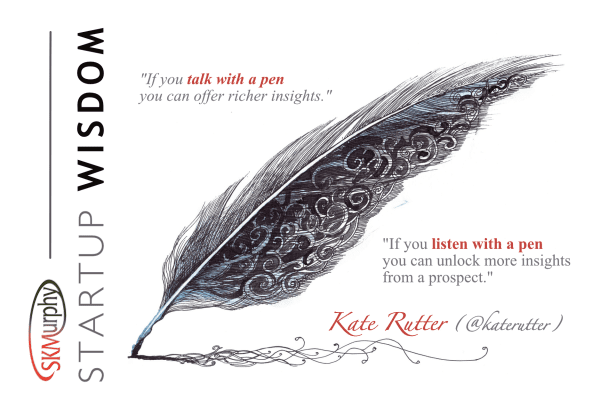Some thoughts on things we do to make it easier for teams who speak English as a second language to understand us.
Lessons From Working With Teams Who Speak English as a Second Language

We work with a lot of folks, probably more than 50% of our clients, who speak English as a second language. I unconsciously do two things that make it more difficult for them and consciously do three to try to make it easier.
Things I do that make me more difficult to understand:
- I talk fast and often slur my words. I do try and consciously slow down and am not offended if asked to repeat myself. I have also started to record–with meeting attendees permission–more meetings and sharing the recordings and in some cases transcripts. This allows me to listen again to complex technical descriptions or insights they shared in the conversation. It also allows them to share with team members who could not attend.
- I use a lot of analogies and idioms that don’t translate well–I make it clear that it’s OK to ask, “what the heck does that mean?”
Things I do to make myself easier to understand:
- Our slides tend to bullets and diagrams to communicate complex topics clearly. We tend to avoid images that express an emotion or a joke as they can be particularly hard to parse.
- We normally “take notes in public” by writing down key points in a shared document or chat. One of us will act as a contemporaneous note taker, capturing key points that anyone makes so that everyone can read the gist in addition to hearing it. This “real time subtitles” approach also communicates that we are actively listening and if we have misunderstood something, or they realize they misspoke and want to rephrase, then they can revisit that point immediately.
- There is another point to make about expressing key points in writing as well as verbally: many folks have a much higher comprehension for written English than spoken English, so this provides the information in form that’s easier to understand, and easier to reprocess several times to improve comprehension. If they have misunderstood one or two key words in the sentence, mentally repeating it to themselves is not as fruitful as re-reading the written version.
- We try to use more diagrams to explain concepts as the visual input gets processed differently from spoken or written language. This will often unlock an understanding or offer another perspective that is useful–especially if we are face to face at a white board or with a piece of paper we can both mark up in turns.
Things I do to understand what they want to communicate:
- I mentioned this above: we often record the conversation–with permission–so that we can reprocess a complex description or insight they have shared. This is particularly important in early conversations where everyone is trying to get their bearings.
- If we are face to face I will often ask them to draw a picture of the situation or challenge. It’s very common that this produces a more intuitive and comprehensible explanation or description.
“If you talk with a pen you can offer richer insights.
If you listen with a pen you can unlock more insights from a prospect”
Kate Rutter (@katerutter) in “SketchNotesSF Meetup round 18: Talk with a Pen / Listen with a Pen (Wed-May-27-2015)“
Related Blog Posts
- Write Down Key Commitments And Questions That Need Answers
- Are You Using Realtime Shared Document Edit Tools? Let’s Compare Notes
- Beat The Clock
- Matt Perez on How Nearsoft Leverages Yammer
- The Benefits of Collaborative Writing, Interviewing, and Improvisation
- 8 Tips for Interviewing Experts
- Why I Enjoy Working With Teams of Bootstrapping Entrepreneurs
This post was republished at https://www.linkedin.com/pulse/working-teams-who-speak-english-second-language-sean-murphy/
Sep-5-2019 Postscript by Ramesh Sambasivan
Ramesh Sambasivan left a comment that I thought was good enough to include as a postscript.
Sean — That’s a very useful blog post. Wearing my instructional design hat, here are a few other things to consider, that may be useful to any presenter:
- Even though using a graph or a chart seems easier than written or spoken words to communicate with such an audience, it may be worthwhile starting with examples or telling a story to explain how the concept you are trying to convey manifests in the world with which your audience has familiarity. Sometimes, adding a graphical representation with X and Y axis adds one more layer to peel in process of understanding a concept over and above the road-bumps of language and cultural context.
- You can start by saying something clearly such as “I tend to talk too fast when I get excited about a subject, so if you feel you have to strain and read my lips to understand me, then please let me know.” This way, you will disarm your audience who know it instinctively when you are reading their lips to make sense of what they are saying.
- Stay true to your communication style, whether it be the use of humor, pop culture references or, as Ruth mentioned, the sporting analogies, but use the opportunity to explain in simple terms the context of your phraseology when you see even one blank stare from a member of your audience. They will appreciate the new knowledge and leave with gratitude that you made their future communication easier.
- Show your audience that you are a life-long learner. Ask your audience members to recite in their own words what they understood about the concept you just explained, using their respective cultural context, and then take notes to add their phraseology and cultural context of examples to enrich your own future communication and vocabulary.
